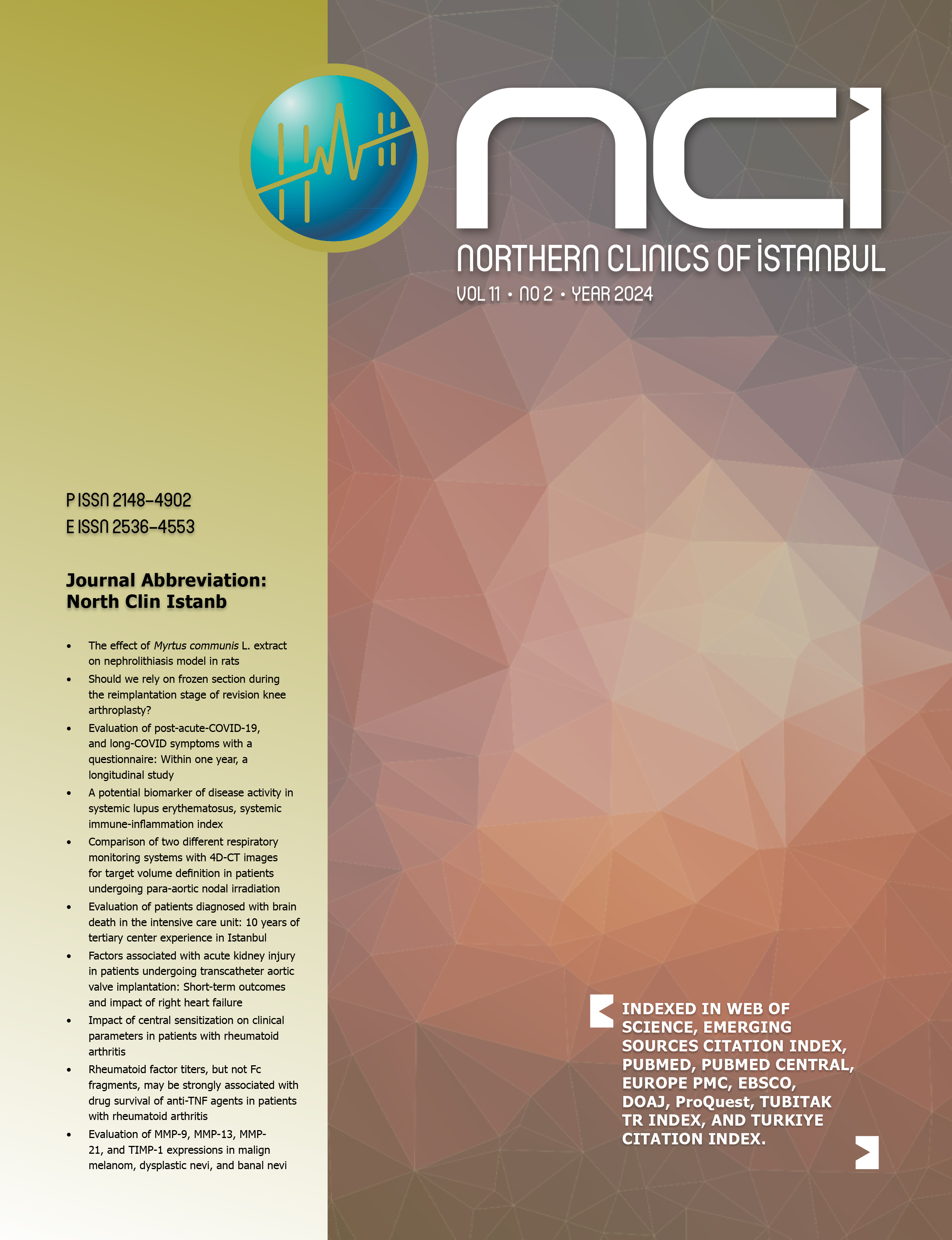Effect of exercise doses on functional recovery in neonatal brachial plexus palsy: A randomized controlled study
Nilay Sahin1, Ali Yavuz Karahan21Department of Physical Therapy and Rehabilitation, Balikesir University Faculty of Medicine, Balikesir, Turkey2Department of Physical Therapy and Rehabilitation, Usak University Faculty of Medicine, Usak, Turkey
INTRODUCTION: The aim of this study was to examine how much recovery upper obstetric brachial plexus palsy (OBPP) patients showed with exercises when they were 3, 6, and 12 months old and to evaluate whether the exercise treatment given at different frequencies contributes to this recovery or not.
METHODS: This study was designed as a randomized controlled trial. Sixty cases who were referred to Pediatric Rehabilitation and Pediatric Orthopedic Clinics with the diagnosis of having Groups I and II OBPP according to Narakas classification were included in the study. Subjects were randomly divided into two treatment groups. The first group had intense exercise program 3 times daily, and the second group had a standard exercise program once in a day. The subjects were assessed using a passive-active range of motion (ROM) and hospital for sick children muscle grading system at their first clinic visit and every month after until they became 12 months old.
RESULTS: In both groups, a significant recovery was observed in ROM and muscle strength of all movements of the shoulder, elbow flexion, and forearm supination at the 3rd, 6th, and 12th-month reassessments, whereas a significant difference was not achieved on both parameters between two groups.
DISCUSSION AND CONCLUSION: According to the results, exercise frequency did not affect the recovery rate and results in the cases with OBPP and exercises were influential against possible complications that may occur.
Keywords: Brachial plexus lesion, exercise; functional recovery; muscle strength.
Doğumsal brakiyal pleksus felcinde egzersiz dozlarının fonksiyonel iyileşme üzerine etkisi: randomize kontrollü bir çalışma
Nilay Sahin1, Ali Yavuz Karahan21Balıkesir Üniversitesi Tıp Fakültesi Fiziksel Tıp ve Rehabilitasyon Ana bilim Dalı Balıkesir2Uşak Üniversitesi Tıp Fakültesi Fiziksel Tıp ve Rehabilitasyon Ana bilim Dalı Uşak
GİRİŞ ve AMAÇ: Bu çalışmada üç, altı ve on iki aylık yaşlarda olan doğumsal brakiyal pleksus felç (DBPF) li hastalarda farklı yoğunluklarda verilen egzersiz tedavilerinin tedaviye olan katkısının araştırılması amaçlanmıştır.
YÖNTEM ve GEREÇLER: Bu çalışma randomize kontrollü çalışma olarak dizayn edilmiştir. Pediatrik rehabilitasyon ve pediatrik ortopedi kliniklerine başvuran hastalardan, Narakas sınıflamasına göre grup 1 ve grup 2 DBPF tanısı alan 60 hasta çalışmaya alındı. Katılımcılar randomize olarak iki tedavi grubuna ayrıldı. İlk grup günde üç kez olmak üzere yoğun egzersiz programı ve ikinci grup günde bir kez olmak üzere standart egzersiz programı aldı. Değerlendirme ilk klinik başvuruda ve katılımcılar 12 aylık olana kadar ayda bir olarak, pasif & aktif eklem hareket açıklığı (EHA) ölçümleri ve Aktif Hareket Skalası (Hospital for Sick Children muscle grading system) ile yapıldı.
BULGULAR: Her iki tedavi grubunda da EHA ölçümlerinde, omuz ekleminin tüm yönlerdeki kas güçlerinde, dirsek fleksiyonunda ve ön kol supinasyonunda, üçüncü, altıncı ve on ikinci ay kontrollerinde istatistiksel olarak anlamlı düzeyde iyileşme sağlandı (p<0.05). Ancak gruplar arası karşılaştırılmalarda istatiksel olarak anlamlı bir fark saptanmadı (p>0.05).
TARTIŞMA ve SONUÇ: Bu çalışmanın sonuçlarına göre egzersiz sıklığı DBPF olan olgularda iyileşme oranını ve sonuçlarını etkilememektedir. Tedavi edici egzersizlerin muhtemel komplikasyonlara karşı koruyucu etkisi vardır.
Anahtar Kelimeler: Brakial pleksus lezyonu, egzersiz, kas gücü, fonksiyonel iyileşme
Manuscript Language: English





















